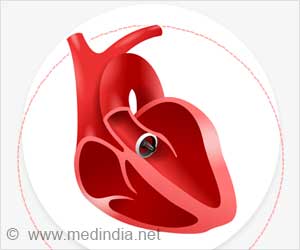Inadequate knowledge of how the devices work may prove fatal for patients who rely on pacemakers and defibrillators to maintain a normal heart rhythm.

"As a nurse practitioner, I use every patient encounter as an opportunity for education," says lead author Kathleen Hickey, EdD, ANP-BC, FNP-BC, assistant professor at Columbia Nursing. "Health literacy is a particular concern for patients with pacemakers and defibrillators because these patients need to know how to respond if they get a shock from their device. Even when the device is quiet they often need to know how to manage co-existing health conditions like diabetes, heart failure, and high blood pressure."
Risks can stem from some common misunderstandings between patients and clinicians, Hickey says. A patient might ignore advice to avoid rigorous exercise and then be surprised when experiencing an irregular heartbeat, for example. Or, patients instructed to check their pulse regularly and report any abnormal activity might not understand how to do this or what heart rate is cause for alarm. "It's not enough just to explain the same thing again in the same way," she says. "You have to stop to ask more specific questions like what activities they do in a typical day and offer simple instructions so they understand, for example, the appropriate heart rate zone for exercise."
To understand the scope of potential communication problems at the clinic where she practices in New York City, Hickey and a team of researchers evaluated the health literacy of 116 patients using a standard measure of reading and math comprehension, the Test of Functional Health Literacy in Adults. The study population was ethnically diverse: 37.1 percent white, 39.7 percent Hispanic, and 22.4 percent African American; 77.4 percent of the population reported finishing high school. The average age of the study population was 68. Evaluations were done in English or Spanish. Almost 30 percent of participants had inadequate health literacy, and an additional 10 percent were marginal.
The study also examined literacy among patients with medical conditions that are common among patients with pacemakers and defibrillators. Individuals with hypertension or high cholesterol were more than twice as likely to have limited health literacy as individuals without those conditions. Diabetics were almost twice as likely to have low health literacy.
"The good news here is that people are living longer with these devices," Hickey says. "The problem is that co-morbidities like diabetes and hypertension can worsen with age, at the same time that cognitive function declines. This makes it more urgent, and more difficult, to improve health literacy."
Advertisement
Advertisement














